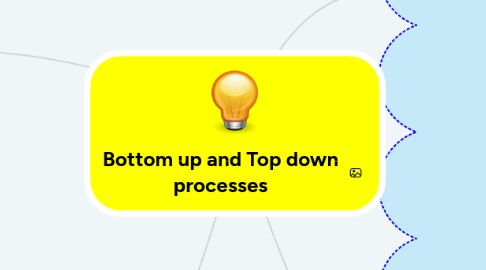Bottom up and Top down processes
by alejandra muñoz


1. This works like this
1.1. 1. We experience sensory information about the world around us
1.2. such as light levels from our environment.
1.3. 2. These signals are brought to the retina.
1.4. Transduction transforms these signals into electrical impulses that can then be transmitted.
1.5. 3. Electrical impulses travel along visual pathways to the brain,
1.6. where they enter the visual cortex and are processed to form our visual experience.
2. Bottom up
2.1. It Refers to processing sensory information as it is coming in.
2.2. In other words
2.3. It can be defined as sensory analysis that begins at the entry level with what our senses can detect.
2.4. How does this happen?
2.5. Sensory information enters
2.5.1. The senses
2.6. Join the pieces of information
2.7. Characteristics
2.8. Focuses on incoming sensory data
2.9. Takes place in real time
2.10. More data driven
3. Top Down
3.1. It refers to perception that is driven by cognition.
3.2. In other words
3.3. The brain applies what it knows and what it expects to perceive and fills in the blanks.
3.4. How this happen?
3.5. Occurs through sensory input
3.5.1. The senses
3.5.1.1. Sight
3.5.1.1.1. .
3.5.1.2. Smell
3.5.1.2.1. .
3.5.1.3. Touch
3.5.1.3.1. .
3.5.1.4. Taste
3.5.1.4.1. .
3.5.1.5. Sound
3.5.1.5.1. .
